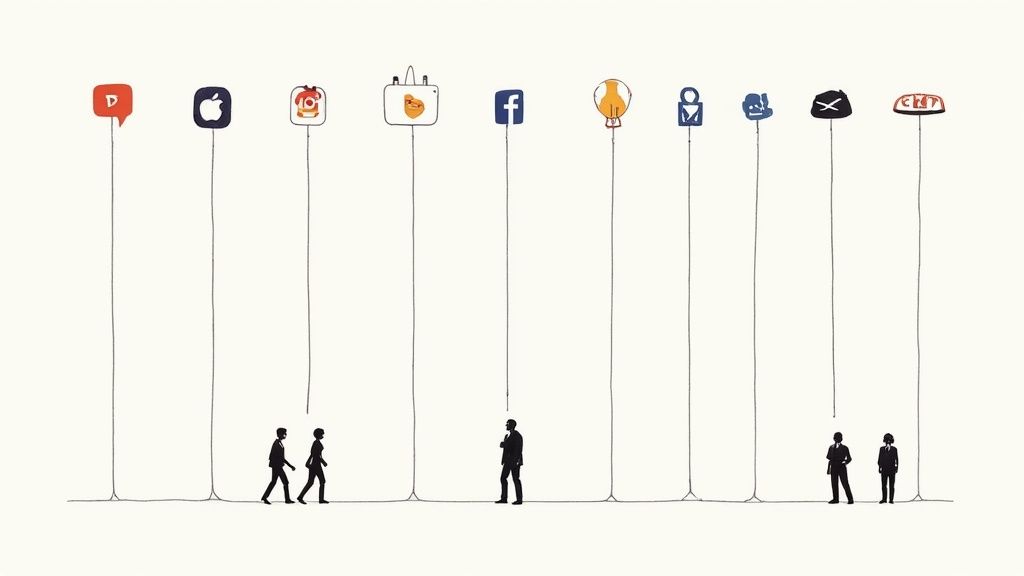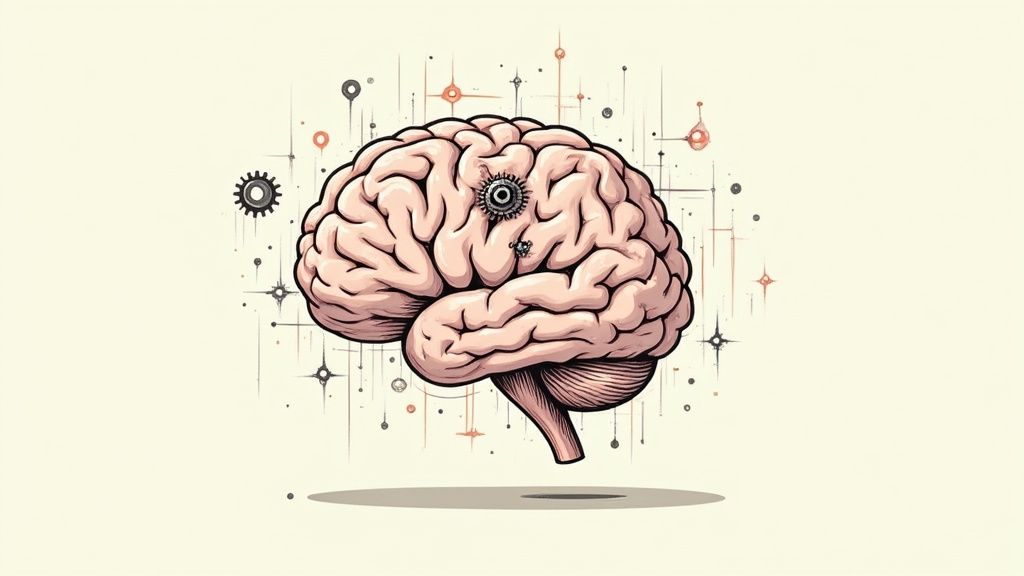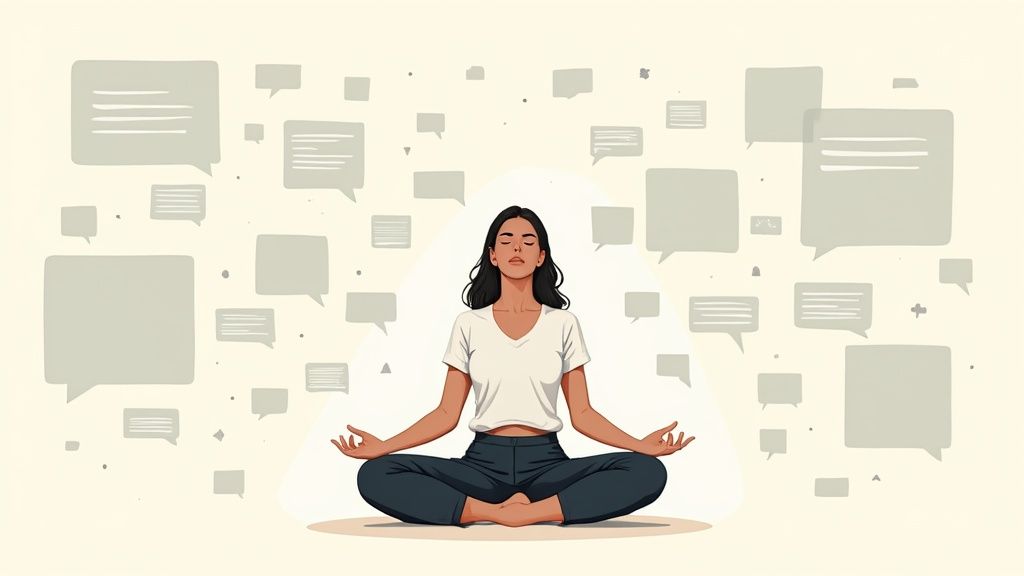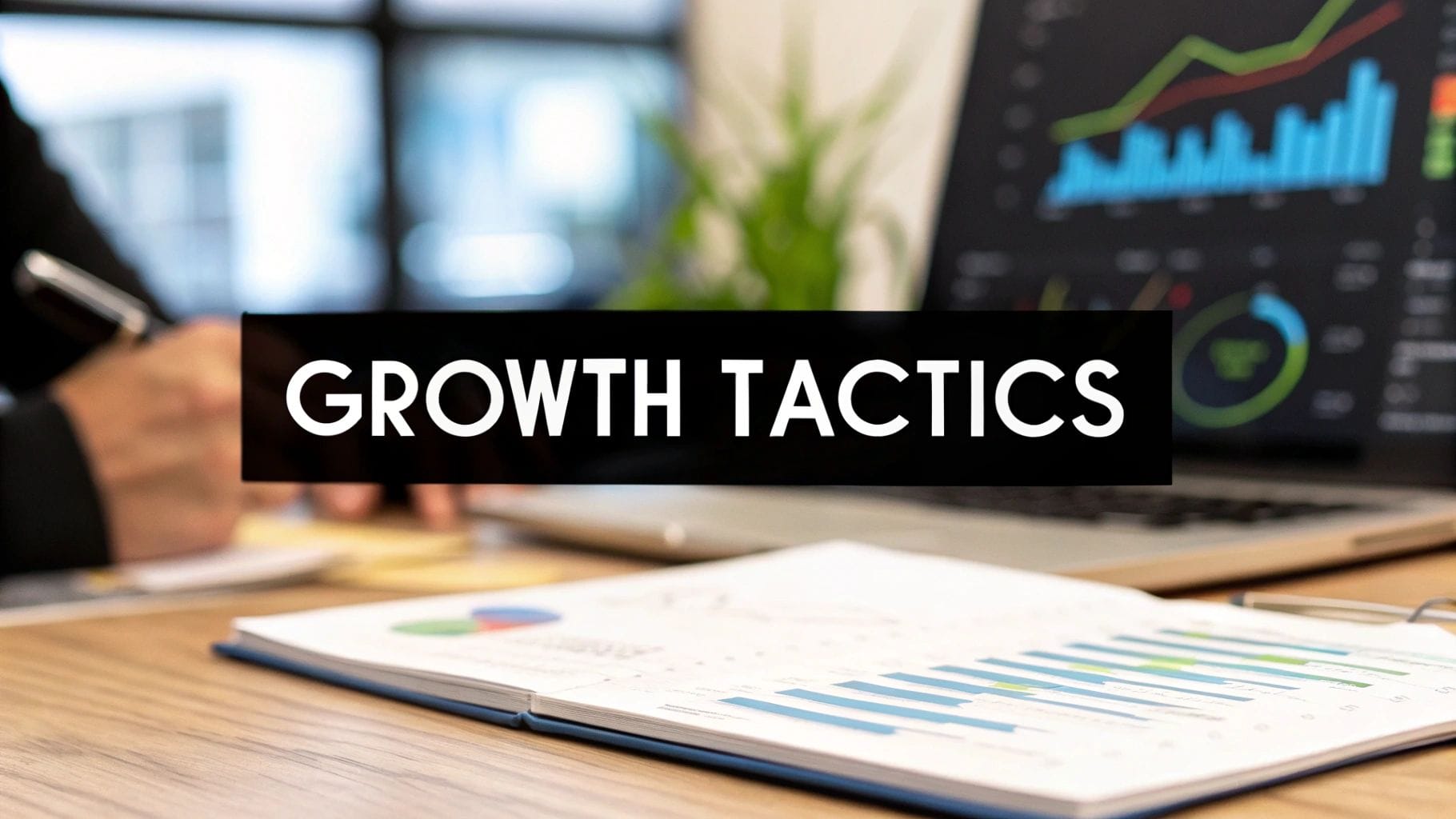The Origins of FOMO: From Concept to Cultural Phenomenon

Have you ever scrolled through your social media feed and been suddenly struck by a wave of anxiety? That nagging feeling that everyone else is having more fun, enjoying better experiences, and living a more fulfilling life than you? That's FOMO, the Fear Of Missing Out. While it feels like a constant companion in modern life, this pervasive feeling hasn't always been so prominent in our culture.
Let's explore the journey of FOMO, from its relatively obscure beginnings as a psychological concept to the significant cultural force it is today.
The term "Fear of Missing Out" was coined in 2004. It initially described the apprehension individuals experienced when they believed others were having rewarding experiences that they themselves were missing. This feeling, of course, isn't entirely new. Humans have likely grappled with similar emotions for centuries. However, giving it a name – FOMO – provided a framework for understanding and discussing this particular anxiety.
The Rise of FOMO in the Digital Age
The concept of FOMO gained significant traction around 2010. This rise coincided with the explosive growth of social media platforms like Facebook and Instagram. These platforms, designed for sharing experiences, inadvertently fueled FOMO by creating a constant stream of often-idealized portrayals of others' lives.
The term "Fear of Missing Out" was originally introduced in 2004 to describe the anxiety associated with missing out on rewarding experiences. Officially added to the Oxford Dictionary in 2013, FOMO’s rise to prominence reflects the pervasive influence of social media. By 2023, statistics showed that a staggering 69% of Americans reported experiencing FOMO, largely attributed to social media influence. Learn more at Wikipedia.
FOMO vs. General Anxiety
While FOMO shares some common ground with general anxiety, there are key differences. General anxiety often arises from uncertainty about future events. FOMO, on the other hand, is grounded in the perception of currently missed opportunities, particularly social ones.
For instance, seeing pictures of friends enjoying a concert on Instagram might trigger FOMO. Worrying about an upcoming exam, however, falls under the umbrella of general anxiety. This distinction highlights FOMO's unique focus on social connection and the fear of being excluded.
This inherent social dimension is crucial to understanding the power of FOMO. Humans are inherently social beings, driven by a deep-seated need for connection. FOMO preys on this innate desire, fostering a sense of urgency and a fear of social isolation. It influences our decisions, often leading us to prioritize experiences based on their perceived social value rather than genuine personal interest. This emphasis on external validation underscores FOMO's profound impact on our emotional well-being and highlights how social media has reshaped our social landscape.
Inside Your Brain: The Neuroscience of FOMO

We've explored the history and culture behind FOMO. Now, let's dive into the biology: what's happening in your brain when FOMO strikes? It's a fascinating look at how our social wiring interacts with the modern world.
FOMO is deeply connected to our need for social connection. Our brains are wired to seek belonging. This drive is so strong that feeling socially excluded activates the same brain areas linked to physical pain. This means FOMO, though felt emotionally, has a real neurological basis.
The Role of the Amygdala and Social Exclusion
The amygdala, a small almond-shaped structure deep in the brain, processes emotions, especially fear and anxiety. When you experience FOMO, your amygdala sees perceived social exclusion as a threat. This triggers a flood of stress hormones, leading to feelings of anxiety and unease.
Imagine seeing photos of friends at a party you missed. Your amygdala might interpret this as rejection, activating a stress response. This highlights the impact of social connection on our emotions.
The Reward Circuit and the Notification Trap
FOMO also affects the brain's reward circuit, the system responsible for pleasure and motivation. Social media notifications, designed to grab your attention, trigger dopamine, a neurotransmitter linked to reward.
This creates a feedback loop: checking notifications gives a little dopamine hit, reinforcing the behavior. This makes it hard to resist constantly staying connected. Even if we know constant checking isn't good, our brains crave those dopamine hits. We get stuck seeking validation and fearing we're missing something better.
Why Your Brain Struggles to Distinguish Real From Perceived Threats
Our ancestors needed social connection to survive. Being ostracized was a real danger. This ancient survival mechanism, though, can't always tell the difference between real social threats and the artificial ones on social media.
The curated, often unrealistic, views of other people's lives online can trigger the same primal fear of exclusion, even if the threat isn't real. This blurring of lines between real and perceived threats fuels FOMO. Our brain treats the fear of missing an online event the same way it would a real-world threat, even though the consequences are very different. This is why FOMO can feel so overwhelming.
Individual Differences in FOMO
FOMO affects many, but some experience it more intensely. Research suggests personality traits like neuroticism and a strong need for social approval can increase FOMO's effects. Understanding your personality can be helpful in managing FOMO. It allows for personalized strategies to address its root causes. Recognizing these factors can help you take control and lessen FOMO's negative impact on your well-being.
Social Media and FOMO: A Dangerous Partnership

Our brains are naturally wired for social connection. This inherent desire is now deeply intertwined with how social media platforms operate, creating a potent combination that can amplify the fear of missing out (FOMO). This section explores how these platforms are designed to capitalize on this very human fear.
The Engineering of Urgency and Comparison
Social media platforms depend on user engagement for their success. Features like notifications, stories, and live events aren't simply about connection; they are carefully crafted to trigger your FOMO. These mechanics instill a constant sense of artificial urgency and promote relentless social comparison.
For example, the ephemeral nature of stories, with their "limited-time" availability, creates pressure to view them before they vanish. This feeds directly into the fear of missing out on something exclusive. Similarly, the endless stream of curated content showcasing others' seemingly perfect lives fosters an environment ripe for comparison.
This constant exposure to highlight reels can lead to feelings of inadequacy and amplify the worry that you're not measuring up. Surprisingly, even seemingly positive interactions can subtly fuel FOMO.
Algorithms and Emotional Reactions
Social media algorithms prioritize content that triggers emotional responses, including FOMO. These algorithms are designed to show you what they think will keep you hooked, often showcasing content that evokes strong feelings, both positive and negative. Content that triggers FOMO, by highlighting exciting events or exclusive experiences, proves particularly effective at keeping users engaged.
However, this focus on emotionally charged content can negatively affect mental well-being. Studies have shown a correlation between excessive social media use and increased anxiety and depression. This connection highlights the importance of understanding how these platforms influence our emotions.
To illustrate this further, let's take a closer look at how different social media platforms utilize specific features to trigger FOMO.
The table below, "Social Media Platforms and FOMO Triggers," compares different platforms and their key FOMO-inducing features, outlining the typical user emotional responses and engagement patterns they elicit.
| Platform | Key FOMO-Triggering Features | User Emotional Response | Engagement Pattern |
|---|---|---|---|
| Stories, Influencer marketing, Live events | Envy, inadequacy, desire for validation | Increased scrolling, compulsive checking, seeking social approval through likes and comments | |
| Event invitations, Group updates, Newsfeed highlighting friends' activities | Feeling left out, longing for social connection | Increased posting, commenting, joining groups, attending online events | |
| TikTok | Trending challenges, Viral videos, Fear of not being "in" on the latest trend | Excitement, pressure to conform, fear of appearing outdated | Increased content creation, participation in challenges, sharing videos |
| Real-time updates, Trending hashtags, Fear of missing out on breaking news or discussions | Curiosity, urgency to stay informed, fear of being out of the loop | Increased tweeting, retweeting, following trends, engaging in discussions |
This table clearly demonstrates how various platform features play on our emotions and drive engagement. Understanding these tactics is the first step toward managing our relationship with social media.
The Psychological Impact of Highlight Reels
Social media often presents a distorted view of reality. We primarily see carefully curated snapshots of other people's lives, not the complete story. This curated reality can create unrealistic expectations and intensify feelings of FOMO.
For instance, seeing friends' vacation photos might trigger FOMO, even if their trip likely included everyday moments and difficulties not depicted in those perfect pictures. Remembering that social media rarely showcases the full scope of someone's experience is essential.
Effects on Sleep, Productivity, and Mental Health
The constant stimulation and emotional fluctuations from social media can significantly impact our overall well-being. Studies indicate that excessive social media use can disrupt sleep patterns, diminish productivity, and negatively impact mental health.
The fear of missing out can lead to compulsively checking notifications, even late at night, interfering with sleep. The continuous flow of information and social comparisons can also hinder focus, reducing productivity. Moreover, the curated nature of online content can contribute to feelings of inadequacy and anxiety, harming mental health.
Even with this knowledge, breaking free from these addictive tendencies can be challenging. Social media's power lies in its ability to tap into our fundamental need for connection and belonging. Even recognizing the manipulative strategies used by these platforms, we often find ourselves drawn back into the cycle of FOMO. This underscores the need to develop healthy strategies for managing our social media usage.
Generational FOMO: Why Millennials Feel It Most

While FOMO (Fear Of Missing Out) affects people of all ages, millennials seem to experience it more intensely. Born between 1981 and 1996, this generation sits at a unique crossroads of physical and digital social interaction. They grew up alongside the rise of social media, which fundamentally shaped their relationship with technology.
Millennials and the Dawn of Social Media
Millennials were the first generation to experience adolescence with the constant presence of social media. This early exposure deeply integrated online interactions into their social lives. Platforms like Facebook and Instagram became more than just communication tools; they became woven into the fabric of their social existence. This constant connection, however, brought unforeseen consequences.
Many millennials, for instance, built their social circles online, creating a new type of social pressure. The ability to constantly observe their peers – what they were doing, who they were with, and where they were going – amplified the fear of being left out.
A key characteristic of FOMO is how prevalent it is among millennials. Studies reveal that almost 7 out of 10 millennials experience FOMO, largely due to social media. This demographic is particularly susceptible to the influence of social events and often overspends to keep up with friends. In fact, 73% of millennials admit to spending money they didn't have to participate in experiences because of FOMO.
This behavior often relates to maintaining social status and staying current with events and trends. The significant impact of FOMO on millennials suggests it’s a defining trait of their generation, influencing both social interactions and consumer choices. Find more detailed statistics here: GWI report on FOMO
How Millennial FOMO Manifests
Millennial FOMO isn't simply about feeling left out; it has tangible consequences. It influences their spending habits, event attendance, and even career decisions. Driven by the fear of missing out, this generation might overspend on experiences, attend events they don't truly enjoy, or even select career paths based on perceived social standing.
The constant online exposure to others' seemingly perfect lives can also foster unrealistic expectations and feelings of inadequacy. This can trigger a cycle of comparison and self-doubt, further intensifying FOMO. The pressure to project a flawless online persona can be exhausting, contributing to the overall stress linked to social media.
Understanding Generational Differences in FOMO
Understanding the unique difficulties millennials face in navigating our constantly connected world is crucial. This awareness provides valuable insight into their experiences and how they manage social comparisons in our increasingly digital age. It also underscores the need for tools and strategies that can help millennials, and other generations, develop healthier relationships with technology.
By understanding these generational nuances, we can work towards a more balanced and fulfilling online experience for everyone. It's not about rejecting social connection; it's about cultivating a healthy relationship with technology and building a stronger sense of self-worth that isn't dependent on online validation.
FOMO Marketing: How Brands Exploit Your Anxieties
The feeling of FOMO (Fear Of Missing Out) is everywhere these days. It's not just a social trend; it's a powerful marketing tool. Smart brands know how to use this anxiety to increase sales and boost customer engagement. Let's explore the tactics they use, how these strategies affect our psychology, and the ethical concerns they bring up.
Limited-Time Offers and the Illusion of Scarcity
One common FOMO marketing tactic is the limited-time offer. These promotions create a sense of urgency. They imply that if you hesitate, you'll lose a valuable opportunity. This artificial scarcity plays on our natural fear of missing out, pushing us to buy things impulsively.
Think about flash sales with countdown timers. The ticking clock pressures you to buy before the "deal" is gone, even if you weren't planning to buy anything.
Exclusivity and the Desire to Belong
Brands also use exclusivity to tap into our desire to be part of something special. By offering limited-edition products or VIP experiences, they create a feeling of specialness and social status. This is very attractive to many people. This tactic is especially effective in the age of social media, where exclusivity means bragging rights and social validation.
For example, a clothing company might launch a limited-edition line with a social media influencer. This can create a frenzy among followers eager to get an exclusive item and connect with a desirable social group.
Social Proof and the Herd Mentality
Social proof is the idea that we look to others to guide our own actions. It's a powerful driver of FOMO. When we see others buying a product or going to an event, it validates our own interest. We feel like we should join in to avoid missing out.
This explains why brands highlight user testimonials, show off large follower counts, or emphasize how many people are already attending an event. These signs of popularity encourage us to follow the crowd. The influence of FOMO goes beyond individual experiences. It affects consumer behavior and business strategies. FOMO-driven purchases are common. 60% of people make purchases because of FOMO within 24 hours of seeing products or experiences on social media. Businesses use FOMO to create urgency and exclusivity around products or events. This encourages impulsive purchases. This marketing tactic is effective because it drives engagement and sales. For example, 71% of consumers are more likely to buy things based on social media referrals. This shows the power of FOMO in shaping consumer decisions. Learn more about these statistics: FOMO Statistics.
Let's take a look at some common FOMO tactics and their effectiveness in the table below.
FOMO Marketing Tactics and Their Effectiveness
This table presents common FOMO marketing strategies, their implementation methods, and effectiveness metrics.
| Marketing Tactic | Implementation Method | Consumer Response Rate | Conversion Impact |
|---|---|---|---|
| Limited-Time Offers | Flash sales, countdown timers, limited stock | High, drives immediate action | Significant increase in short-term sales |
| Exclusivity | Limited-edition products, VIP access, influencer collaborations | Moderate, attracts specific demographics | Boosts brand perception and loyalty |
| Social Proof | User testimonials, follower counts, event attendance figures | High, leverages herd mentality | Increases trust and encourages purchases |
This table demonstrates the various ways brands use FOMO to influence consumer behavior. While limited-time offers create a sense of urgency, exclusivity appeals to a desire for status. Social proof leverages the power of the crowd. Each tactic contributes to increased conversions, although the specific impact varies depending on the method and target audience.
The Ethics of FOMO Marketing
FOMO marketing can be very effective, but it also raises ethical questions. Is it right to manipulate consumers' anxieties to drive sales? Some people argue that these tactics exploit our vulnerabilities. They encourage impulsive behavior that might not be in line with our real needs or values.
This manipulation can be especially harmful to those more susceptible to FOMO, such as younger people or those with anxiety. Marketers need to carefully consider the line between smart marketing and exploitation.
Recognizing and Resisting FOMO Marketing
By understanding how brands use FOMO, we can become more aware consumers. Recognizing these strategies empowers us to make better purchasing decisions. Instead of reacting impulsively to manufactured urgency, we can choose what we truly need. It’s about taking charge of our choices and prioritizing our real needs, not the anxieties created by clever marketing.
Breaking Free: Practical Strategies to Overcome FOMO
It's time to reclaim your peace of mind. Through insights from psychologists, mindfulness experts, and individuals who have successfully navigated their own FOMO, we'll explore techniques that truly make a difference. We'll cover how to establish healthy digital boundaries without feeling isolated, discover cognitive exercises to challenge those unrealistic comparisons, and explore mindfulness practices to help you stay grounded in the present.
Identifying Your FOMO Triggers
The first step in overcoming FOMO is understanding its root causes. Everyone experiences FOMO differently, which makes identifying your personal triggers crucial.
-
Social Media: Which platforms tend to trigger your FOMO the most? Is it Instagram with its carefully curated highlight reels, or perhaps Facebook with its constant stream of event invitations?
-
Specific People: Are there certain friends or influencers whose online presence leaves you feeling inadequate or like you're missing out on something important?
-
Situations: Do particular events or activities consistently spark your FOMO? Perhaps it's weddings, concerts, or the travel adventures of others.
Once you've pinpointed your triggers, you can begin developing targeted strategies to manage them. For instance, if Instagram is a major source of FOMO, consider limiting your usage or unfollowing accounts that contribute to negative feelings.
Setting Digital Boundaries
Creating boundaries with technology doesn't equate to complete disconnection. It's about establishing intentional control over where you direct your attention.
-
Scheduled Breaks: Set aside specific times each day to unplug completely. This might be during meals, an hour before bed, or for a designated period in the afternoon.
-
Notification Management: Turn off non-essential notifications. The constant influx of alerts can keep you in a reactive state and intensify feelings of FOMO. Choose the notifications you truly need and disable the rest.
-
App Limits: Many smartphones now offer built-in features or apps to help you manage your screen time. Set daily limits for the apps that most often trigger your FOMO to reduce your overall exposure.
These practical steps can help you regain control over your time and attention, allowing you to focus on what truly matters instead of being consumed by the fear of missing out.
Cognitive Reframing
Cognitive reframing involves challenging and restructuring negative thought patterns, replacing them with more positive and realistic ones. This technique is particularly useful in combating those unrealistic comparisons that often fuel FOMO.
-
Challenge the Highlight Reel: Remember that social media often presents a curated, idealized version of reality. The online world rarely reflects the full, unfiltered picture of someone's life.
-
Focus on Your Own Experiences: Instead of dwelling on what others are doing, shift your focus to the positive aspects of your own life. Cultivate gratitude for the experiences you have and the people who enrich your life.
-
Practice Self-Compassion: Be kind to yourself. It's perfectly normal to experience FOMO from time to time. Acknowledge your feelings without judgment and remember that these emotions are a common human experience.
By changing how you perceive social media and other people's experiences, you can significantly reduce the impact of FOMO, empowering you to appreciate your own life more fully.
Mindfulness Practices
Mindfulness is the practice of cultivating present moment awareness. It helps you focus on what you're currently experiencing, rather than worrying about what you might be missing.
-
Deep Breathing Exercises: Set aside a few minutes each day to practice deep, conscious breathing. This simple practice can calm your nervous system and alleviate anxiety.
-
Body Scan Meditation: Bring your attention to different parts of your body, simply observing any sensations without judgment. This technique can help ground you in the present moment.
-
Mindful Activities: Engage in activities that fully absorb your attention, whether it's gardening, painting, listening to music, or spending time in nature. Find what resonates with you.
These mindfulness practices can strengthen your ability to stay present, reducing your susceptibility to FOMO. By focusing on the here and now, you can fully appreciate your current experiences. Building a healthier relationship with social media isn't about disconnecting entirely; it's about consciously choosing where your attention and energy go. This enables you to enjoy the benefits of connection without being controlled by the fear of missing out.
Want to learn more about leveraging social proof in your marketing while minimizing FOMO in your audience? Visit Notifyio.net for expert insights and strategies.




Leave a Reply